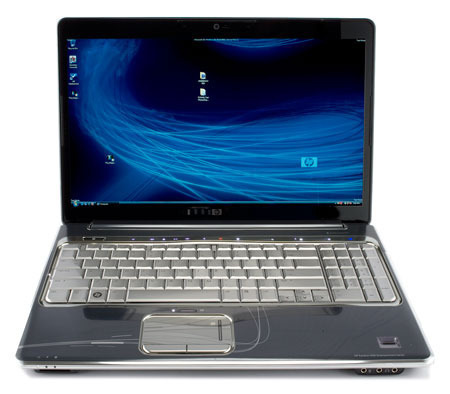Samsung Pm961 Driver
First look - Samsung SM951 M.2 SSD in a Supermicro SuperServer 5028D-TN4T ATTO Disk Benchmark SM951 results on Supermicro SuperServer SYS-5028D-TN4T Naturally, I have some further testing to do, to see if driver, power settings, BIOS settings, or other tweaks make a significant difference with the PM951. The Samsung PM961 is basically an OEM client version of the 960 EVO. The 960 EVO sports slightly better performance specifications than the PM961, but in actual use, there is no discernable.
Unmatched SSDs for PCs and workstations
Samsung SSD sets the standard in high-performance storage for PCs with rapid data processing and reliability in compact form factors.
- Accelerate into next-gen computingPM981 delivers optimal SSD features for PCs. By supporting the PCIe interface standard up to 4 lanes and TurboWrite technology, faster Seq. R/W speeds accomplish fast performance using lower power via an NVMe power-saving mode.
- Accelerated processing in a compact form factorPM971a offers remarkable design flexibility through Ball Grid Array (BGA) packaging. Combining power-efficient compactness and boosted robust performance, the PM971a is a first-rate storage solution for slimmer laptops, providing high performance in a tiny package.
- 3x faster multitasking speed than HDDPM871b perfectly satisfy the storage solution needs of mainstream PCs with a SATA 6.0Gbs controller and TurboWrite technology. They provide advanced SSD benefits with a broad portfolio of densities and form factors, improved performance with lower power, and data protection by TCG OPAL.
Please check the comparison item if you want to data comparison.
Desktop
Powerfully tailored for every specific need
All product specifications reflect internal test results and are subject to variations by user’s system configuration. All product images shown are for illustration purposes only and may not be an exact representation of the product. Samsung reserves the right to change product images and specifications at any time without notice.
As the title suggests, I'm having trouble installing Windows 7 64-bit on a Samsung SM961 M2 SSD drive, via the M2 slot on an Asus X-99 A motherboard.
Samsung Pm961 Driver
The drive is visible to the BIOS, but not during the Windows 7 installation. However, if I install the same copy of Windows 7 on a regular drive, it immediately recognises the M2 SSD and makes it usable.
I am almost certain that this is simply a 'missing driver during setup' issue, because the OS can see the SM961 after installing on a normal hard drive and, of course, my BIOS can see it just fine.
It's made trickier by the fact that the SM961 is a relatively new/unknown OEM-only part and is not (AFAIK) the same (driver-wise) as the Samsung 960.
Things I have already (unsuccessfully) tried:
- Checked and double-checked various BIOS settings:
- Compatibility mode allows UEFI devices
- Secure boot is disabled
Loading various Samsung NVme drivers during installation:
- These Samsung ones from HP
- These 'pure' WHQL Samsung ones
Slipstreaming the above drivers directly into the Windows 7 setup ISO before installation
Slipstreaming Microsoft's hotfixes for W7 NVme support into the setup ISO, as described on the hotfix page and on this blog:
Following the advice in this Reddit thread.
Following the advice in this Tomshardware thread.
Installing Windows 7 on the same PC using a regular SATA hard drive (whereupon I can immediately see the M2 drive in Windows Disk Manager) and then attempting to clone the install to the M2 drive. The drive did not boot and I haven't got the patience to mess around with 'fixing' UEFI boot data.
The only thing I have not yet tried is transplanting parts of the Windows 10 ISO into the Windows 7 ISO as described in the TomsHardware post, above. Because I feel like there should be a native way to fix this and allow the Windows 7 setup to 'see' the M2 drive (especially since the OS can see it immediately after installation).
Registration key for driver update. Examples: 'LaserJet Pro P1102 paper jam', 'EliteBook 840 G3 bios update' Need help finding your product name or product number? - Examples: LG534UA • For Samsung Print products, enter the M/C or Model Code found on the product label. Tips for better search results • Ensure correct spelling and spacing - Examples: 'paper jam' • Use product model name: - Examples: laserjet pro p1102, DeskJet 2130 • For HP products a product number. - Examples: “SL-M2020W/XAA” • Include keywords along with product name.
Any thoughts, please?
1 Answer
This is more of a workaround than a real solution, so if anyone discovers a better and more consistent way to do this please comment or answer.
Install Windows on a regular drive first and then clone it to the M2 drive.
Samsung Pm961 Drivers
I couldn't get Windows to see the SM961 during install, however what did work was installing Windows 7 to a regular SATA hard drive. After installing all the necessary drivers for my motherboard etc. Windows was able to see the SM961, and I used a free disk imaging program (Macrium Reflect) to clone the entire SATA drive with the newly installed operating system to the SM961. I was then able to unplug the SATA drive and boot from the SM961.
Samsung Pm961 Driver Windows 7
I tried another clone tool (EaseUS) first which did not work.
